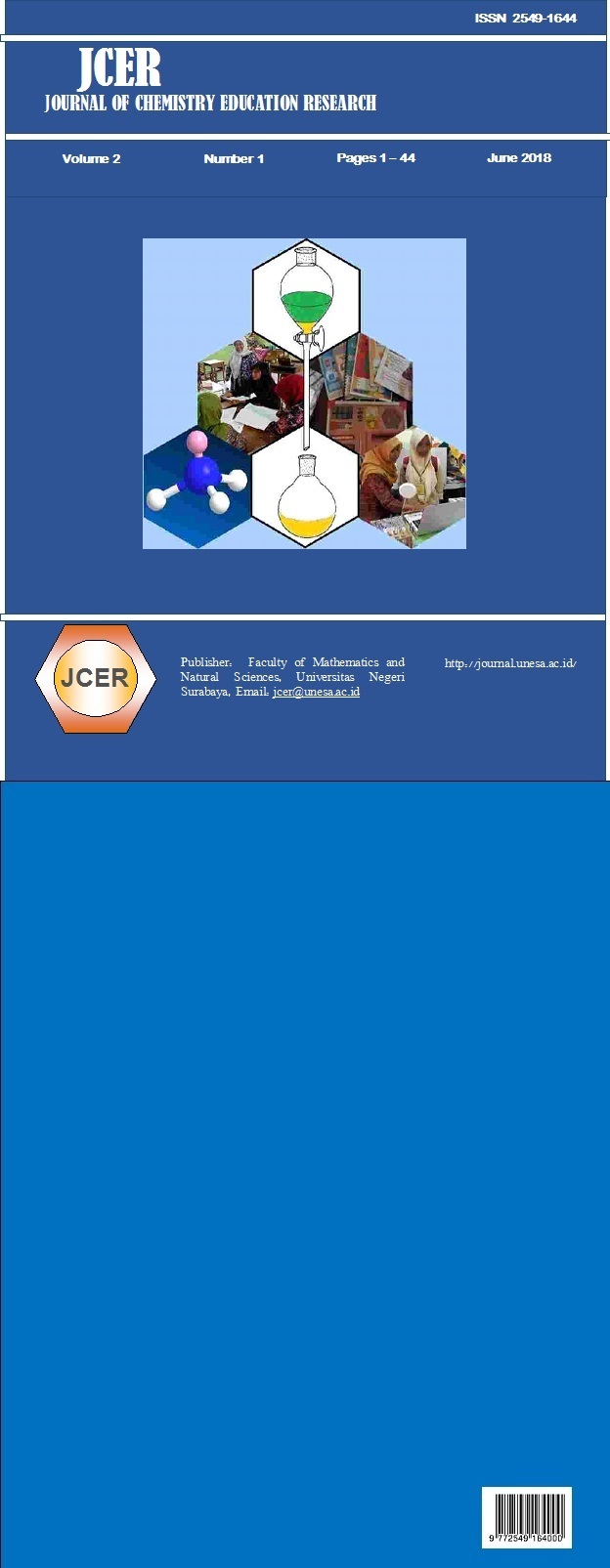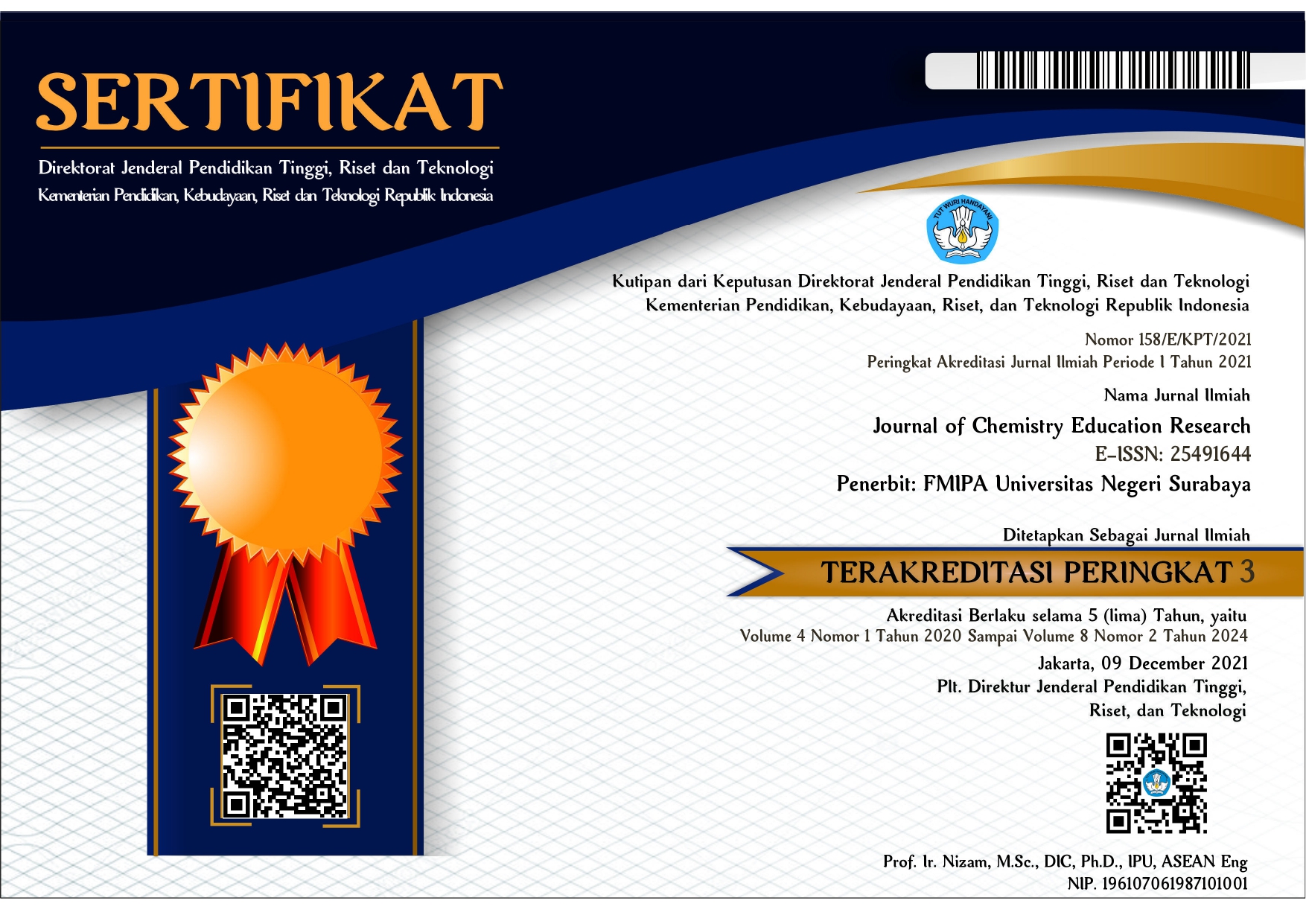IMPLEMENTATION OF CROSSWORD PUZZLE MEDIA IN LEARNING CHEMICAL WITH NUMBERED HEADS TOGETHER MODEL (NHT)
DOI:
https://doi.org/10.26740/jcer.v2n1.p11-18Keywords:
model numbered heads together, crosswords, interest in learning, learning achievementAbstract
This classroom action research aims to improve learning on the competence of the technique of electrical installationstudents SMK class X on the topic of chemistry through the learning Numbered Heads Together (NHT)model using crossword puzzles. The findingsstudy are the results cycle I pre-test 60 and post-test 65 while in cycle II pre-test of 70 and post-test 94. Performance teachers in cycle 1 is 59% moderate category and cycle II is 100% high category. Behavior change students in cycle I is 50% categorized as low student activity and cycle II 80% is categorized high student behavior change. The activity of the student spirit learning cycle I 53% is categorized enough and cycle II 85% is categorized as high. The results of the interview cycle I and II there are changes that the better because students feel very happy and enthusiasm with media crossword puzzles. Based on the Minimum Exhaustiveness Criterion (KKM) review, the application crossword media on elemental chemistry learning with NHT type learning model influences students learning outcomes in the complete category. Based on these results, it was concluded that. The application crossword media with learning model NHT can increase learning interest and learning achievement of class X TITL-1 students at SMKN 1 Cerme Gresik year 2017-2018.
References
[1] Asikin. (2009). Cara Cepat dan Cerdas Menguasai Penelitian Tindakan Kelas Bagi Guru. Penerbit: Manunggal Karso.
[2] Maharani, Tria. (2013). Penerapan Metode Pembelajaran Teams Games Tournament (TGT) dengan Media Teka-Teki Silang (TTS) untuk Meningkatkan Hasil Belajar IPA Biologi Ekosistem. Surakarta: Universitas Muhamadiyah.
[3] Ibrahim, Muslimin. (2000). Pembelajaran Kooperatif. Surabaya: UNESA.
[4] Margono. (2004). Metodologi Penelitian Pendidikan. Jakarta: Rineka Cipta.
[5] Djamarah& Zain. (2006). Strategi Belajar Mengajar. Jakarta: PT. Rineka Cipta.
[6] Arikunto, Suharsimi. (2008). Prosedur Penelitian Suatu Pendekatan Praktik. Jakarta: PT. Rineka Cipta.
[7] Arsyad, Azhar. (2007). Media Pembelajaran. Jakarta: Raja Grafindo Persada.
[8] Hamalik, Oemar. (2008). Perencanaan Berdasarkan Pendekatan Sistem. Jakarta: Bumi Aksara.
[9] Hidayati, Nia. (2009). Teka-Teki Silang Cegah Otak dari Kepikunan.
[10] Kagen, Spencer. (2011). Cooperative Learning Model Type Numbered Heads Together. International Journal of Cooperative Learning. Vol. 1, No. 5.
[11] Lie, Anita. (2002). Mempraktikkan Cooperative Learning di Ruang-ruang Kelas. Jakarta: PT. Gramedia
[12] Ornstein. (1990). Strategies for Effective Teaching. USA. Harper Collins Publisher. Inc.
 Abstract views: 666
Abstract views: 666



